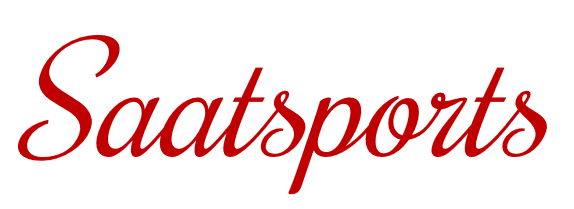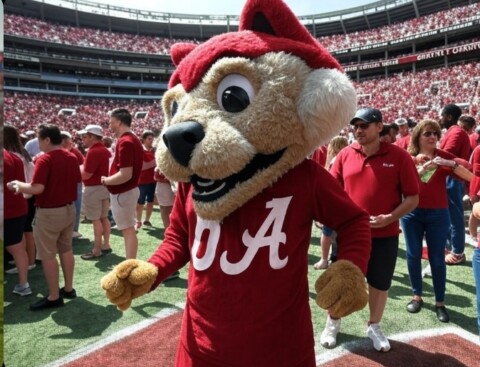Hockey is a fast-paced, adrenaline-pumping sport, and few moments in a game are as thrilling as a power play. The power play in hockey occurs when one team gains a numerical advantage due to an opponent’s penalty, creating a high-stakes opportunity to score. Whether you’re a lifelong fan or new to the rink, understanding the power play in hockey is key to appreciating the game’s intensity and strategy. This article dives into the rules, strategies, and impact of the power play, with insights into how it shapes NHL games and beyond.
Preview
- What Is a Power Play in Hockey?
- Key Hockey Power Play Rules
Player Limits
Icing Restrictions
Power Play Formations
- Power Play Strategies in Hockey
Umbrella Formation
Diamond Formation
Overload Strategy
Player Roles
- The Impact of the Power Play on Hockey Games
- Why the Power Play Matters to Fans
- Conclusion: Embrace the Power Play
- FAQ: Power Play in Hockey
What Is a Power Play in Hockey?
A power play formation happens when one team has more players on the ice due to an opponent receiving a penalty. Typically, this means a 5-on-4 or 5-on-3 situation, where the team with the advantage (the power play team) has one or two extra players for a set period, usually two minutes for a minor penalty. The power play is a golden opportunity to control the puck, set up plays, and score against a shorthanded opponent.
The NHL power play is governed by strict rules to ensure fairness. When a player commits an infraction, such as tripping, slashing, or hooking, they’re sent to the penalty box, and their team must play shorthanded. If the power play team scores before the penalty time expires, the penalized player returns, ending the power play. However, in cases of major penalties (e.g., five-minute fighting penalties), the power play continues regardless of goals scored.

Understanding hockey power play rules is crucial for fans. For example, coincidental penalties—when both teams receive penalties simultaneously—don’t result in a power play, as player counts remain even. Additionally, a team can’t have fewer than three skaters (plus the goaltender) on the ice, even with multiple penalties.
Key Hockey Power Play Rules
power play in hockey operates under clear guidelines, primarily set by the NHL and other governing bodies like the International Ice Hockey Federation (IIHF). Here are the core hockey power play rules:
Penalty Duration
Minor penalties last two minutes, while major penalties last five. A power play ends early if the advantaged team scores, except for major penalties.
Player Limits
The shorthanded team can have no fewer than three skaters (plus the goalie). If multiple penalties stack up, additional players wait in the penalty box.
Icing Restrictions
The shorthanded team cannot ice the puck (send it down the ice to relieve pressure) without a faceoff, making it harder to defend.
Power Play Formations
The power play team typically uses five skaters, often in a 3-2 or 2-3 setup, to maximize offensive pressure.

These rules create a dynamic where the power play team must act quickly and strategically, while the shorthanded team focuses on defense and clearing the puck.
Playing Strategies in Hockey
Power play in hockey is a chess match on ice, requiring precise coordination and creativity. Teams use specific formations and tactics to exploit their numerical advantage. Here are some common NHL power play strategies:
Umbrella Formation
Three players position themselves high in the offensive zone (near the blue line), with two near the goal. This setup creates passing lanes and shooting opportunities from the point.
Diamond Formation
One player at the point, one in the slot, and two along the boards form a diamond shape, allowing quick puck movement to confuse defenders.
Overload Strategy
Players cluster on one side of the ice to draw defenders, then pass to an open player on the opposite side for a high-quality shot.
Player Roles
Elite power play units often feature a “quarterback” at the point (usually a defenseman with strong passing skills), a “net-front presence” to screen the goalie, and snipers on the wings for accurate shots.

Teams like the Tampa Bay Lightning and Edmonton Oilers have mastered the NHL power play, with stars like Nikita Kucherov and Connor McDavid excelling in these high-pressure situations. Effective power plays rely on quick puck movement, player chemistry, and exploiting defensive gaps.
The Impact of Power Play on Hockey Games
The power play can be a game-changer, often swinging momentum and deciding outcomes. A successful power play goal can energize a team and the crowd, while a failed one might allow the shorthanded team to gain confidence. In the NHL, power play efficiency (the percentage of power plays resulting in goals) is a critical stat. Top teams often convert 20-25% of their power play opportunities, while struggling teams may dip below 15%.The power play’s impact extends beyond scoring. It forces teams to play smarter defensively, as penalties leading to power plays can result from undisciplined play.
Coaches emphasize penalty-killing strategies to neutralize the opponent’s advantage, making the penalty kill as crucial as the power play itself.Statistically, power plays are pivotal in close games. For example, during the 2024-25 NHL season, teams with strong power play units, like the Colorado Avalanche, often relied on their man-advantage to secure playoff berths. Conversely, a weak power play can cost a team crucial points in the standings.
Why the Power Play Matters to Fans
For hockey fans, the power play is a moment of high drama. The rink opens up, passes become sharper, and the crowd holds its breath as the power play team sets up. For beginners, watching a power play is a great way to learn player roles and team strategies. It’s also a chance to see star players shine, as power plays often highlight a team’s best offensive talents.The power play also adds a layer of fairness to the game. Penalties punish infractions, giving the opposing team a chance to capitalize. This balance keeps the sport competitive and rewards disciplined play.

Conclusion: Embrace the Power Play
The power play strategy in hockey is more than just an extra player on the ice—it’s a strategic battle that can define a game’s outcome. By understanding hockey power play rules, appreciating the strategies, and recognizing its impact, fans can deepen their love for the sport. Whether you’re cheering for an NHL power play goal or marveling at a penalty kill, these moments showcase hockey’s intensity and skill.
If you want to learn more about hockey’s exciting moments? Follow your favorite NHL team, watch game highlights, or join a local hockey community to stay in the action!
FAQ: Power Play in Hockey
What is a power play in hockey?
A power play occurs when one team has a numerical advantage due to an opponent’s penalty, typically playing 5-on-4 or 5-on-3 for a set time.
How long does an NHL power play last?
A power play lasts two minutes for a minor penalty or five minutes for a major penalty, unless the advantaged team scores, ending minor penalty power plays early.
What are common power play strategies?
Teams use formations like the umbrella or diamond, focusing on quick puck movement, screening the goalie, and creating high-percentage shots.
Why is the power play important in hockey?
The power play can shift game momentum, lead to crucial goals, and highlight a team’s offensive prowess, impacting both the score and strategy.
Can a shorthanded team score during a power play?
Yes, a shorthanded team can score a shorthanded goal, often by capitalizing on a power play team’s mistake or aggressive play.






